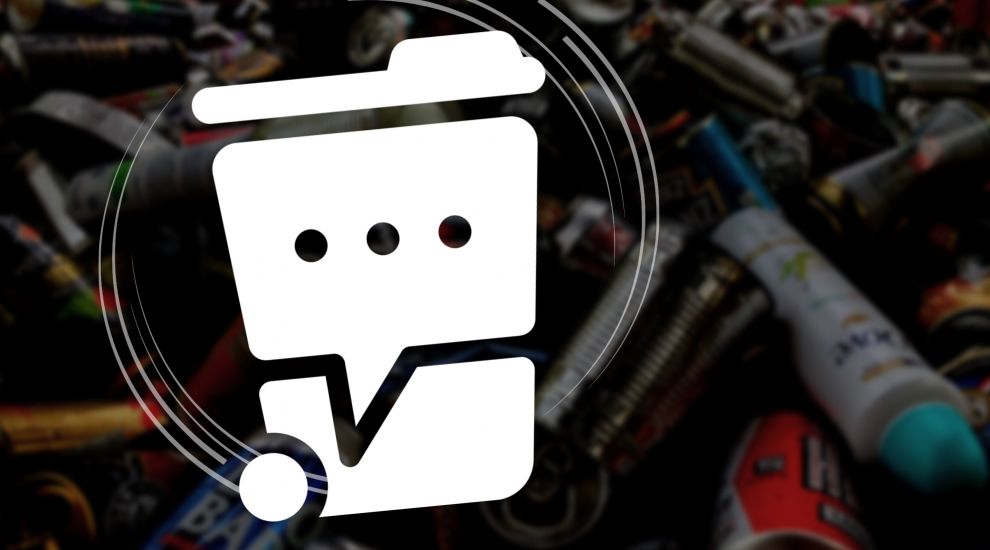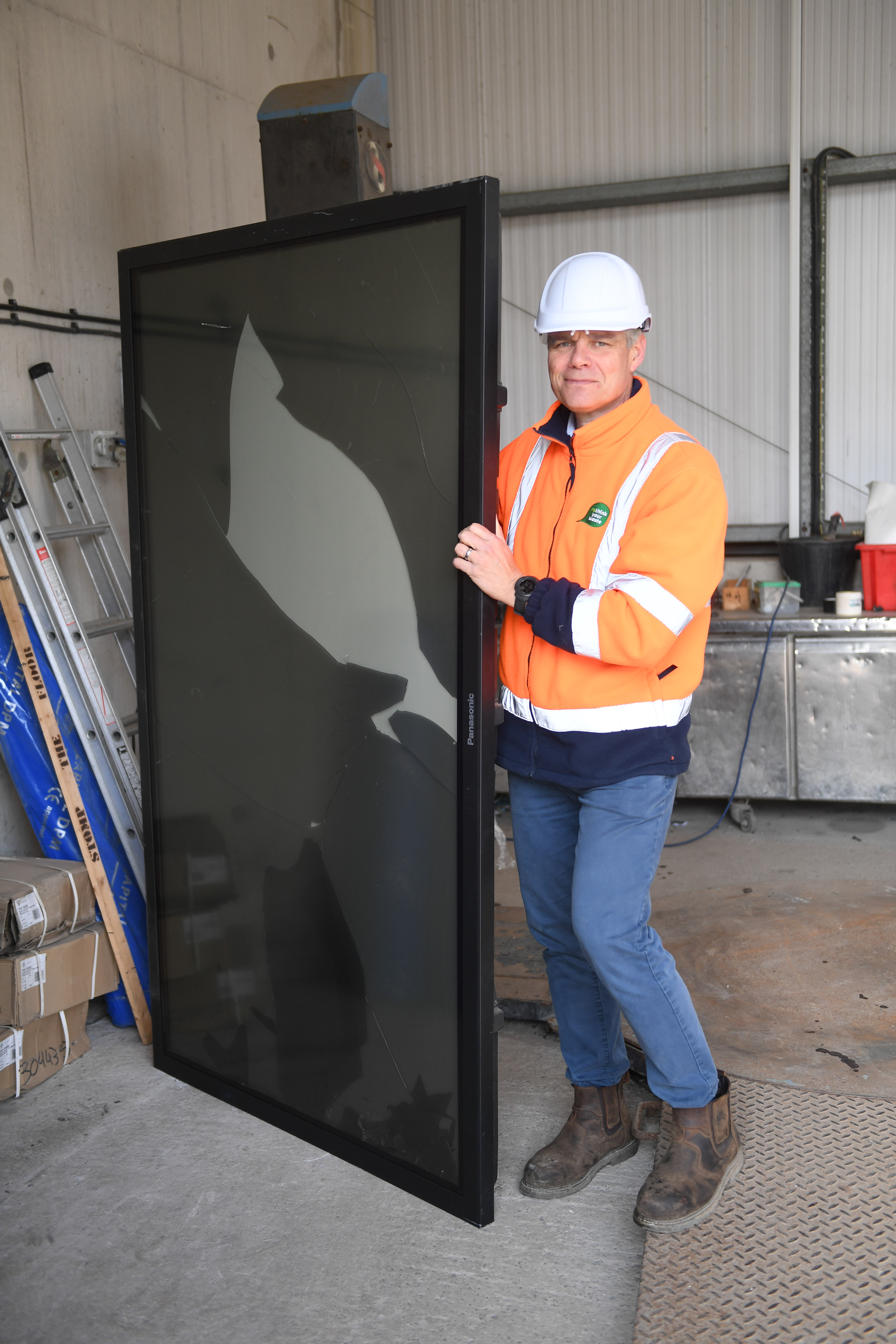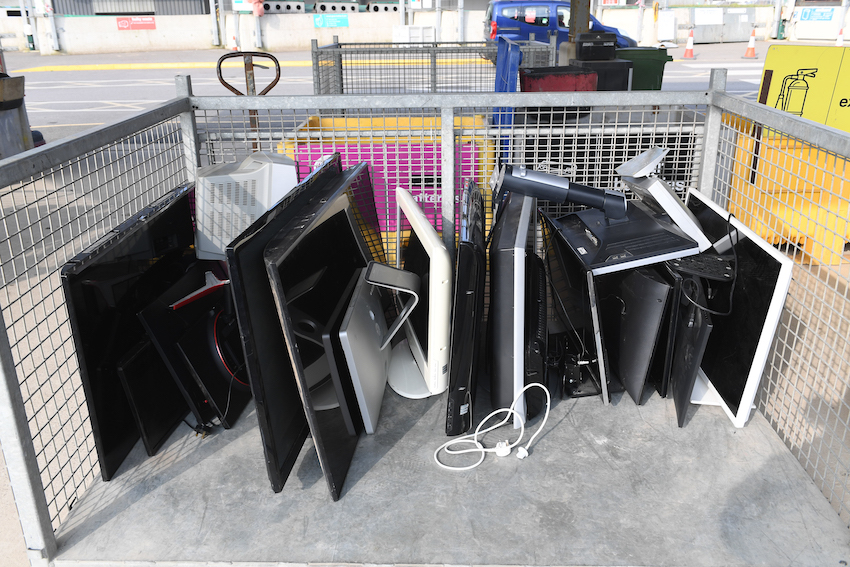


Jersey throws away more than 280,000 tonnes of solid waste a year – four times the weight of Britain’s giant aircraft carrier HMS Queen Elizabeth.
This is the amount of waste that is tipped as rubble at La Collette and burned in the incinerator – not the 30,000 tonnes that the island recycles each year.
When it comes to household waste, Jersey produces about 100,000 tonnes a year, meaning that each islander produces about a tonne annually.
In fairness, most building rubble delivered to La Collette is reprocessed, and the incinerator produces about 10% of the island’s electricity, so recycling does take place.
However, Jersey is still a ‘throwaway society’, which needs to collectively think more about what it bins, according to those overseeing our recycling efforts. It's the subject of a series of features across this week by Express and the JEP...
Jersey’s household recycling rate is about 30% - meaning that for every three kilograms turned into another product, seven is tipped into the incinerator and/or shredded. It has remained at this level for several years.
35% of what we recycle – about 10,000 tonnes - is green waste, which is turned into soil improver. Next is paper and card (22% / 6,000 tonnes) followed by glass (19% / 5,300 tonnes) and plasterboard (10% / 2,550 tonnes). Metals, wood, electrical items, plastics and textiles make up the rest.
The Government, which coordinates most recycling in Jersey, would not only like our rates to increase but also for the total volume of waste to reduce, as it seeks to decarbonise the Jersey economy by 2050, an aim of its Carbon Neutral Roadmap.
It is also currently engaged in a major exercise to determine the environmental and financial cost of its recycling strategy – to assess the true value of recycling, which involves shipping more than 4,000 tonnes of materials to the UK each year.
Meanwhile, St. Helier and St. Saviour sends its recycling to France. Last year, more than 890 tonnes of plastic, metal, paper and cardboard was sent to a plant in Saint Malo.

Pictured: The Government's Head of Recycling, Piers Tharme.
The Government official with responsibility for recycling is Piers Tharme, who said: “I think, in general, we do live in a throwaway society and when people finish with something, they put it in the bin and it is not their problem anymore.
“We need to move away from that and consider the options that we have for waste, which first and foremost is to create less of it.”
“It is moving towards a circular economy, which is an idea coming into the conversation a lot more. That means keeping materials moving around rather than taking them out. For example, using cardboard multiple times is a lot better than chopping down trees to make it.”
Jane Burns, who runs the Government’s ‘Eco Active’ programme, said that islanders needed to make simple but important consumer and lifestyle choices, such as not buying more food than they need, and not binning clothes that have only been used a few times.
She added that people should also embrace sharing equipment and materials that were used infrequently, such as tools and garden machinery, with neighbours, family and friends.
Mr Tharme scotched rumours that materials put in recycling bins ended up in the incinerator, which produces 10% of the island’s electricity, enough to power 7,000 homes.
“We keep close control and monitoring of where our recycled materials go. We are aware that some people suspect that it all goes into the incinerator but that isn’t true. For the contracts I run, I get a monthly breakdown from the various UK facilities we use.”
Mr Tharme said he had just returned from the UK, where he had visited some contract partners, including those handling TVs, lightbulbs and electrical appliances like hairdryers, to check where Jersey's recycling was going.
“I am 100% content that recycling from Jersey was being used for bone fide purposes, with paper, cardboard and plastic bottles being processed in the UK and metals, which join an international market, managed by a reputable global firm,” he said.
Like the Isle of Man, but unlike Guernsey, Jersey also uses an ‘Energy Recovery Facility’ – often referred to as the incinerator – to manage its waste.

Pictured: Televisions and monitors at the Household Recycling Centre at La Collette, which will be exported to the UK.
However, Mr Tharme said that the need to maintain a level of heat to generate electricity was not a barrier to more recycling.
“There is an optimal level that it operates at but even if we increased our recycling rate by ten per cent, it would still run efficiently.
“The technology around recycling is rapidly evolving so not only are we encouraging islanders to reduce their waste and recycle more, but also the list of recyclable goods, particularly electronic goods, will grow.”
We produce 100,000 tonnes of refuse a year, so roughly one tonne per person.
Around 35% of household waste is food or kitchen waste.
Non-recyclable household and commercial waste is sent to the Energy Recovery Facility. In 2022, it burnt 70,676 tonnes of waste. That’s the equivalent of 5,800 double-decker buses.
All material collected through Government-run schemes (so, not St. Helier or St. Saviour) is sent for processing in the UK.
Cardboard – sent to processing mills in the south of England where it is turned into new cardboard packaging. In 2023, 2,771 tonnes of cardboard was sent to the UK.
Paper – sent to mills in the south of England, where it is turned into new mixed paper products. Last year, 738 tonnes were exported to the UK.
Plastic bottles – sent to the Midlands where they are turned into food-grade containers and bottles. Last year, 101 tonnes of plastic bottles were shipped off island.
Metal packaging – processed by European Metal Recycling, a global business which also runs the scrap metal yard within the La Collette Waste Management Site. Recycling metals are processed in EMR’s Southampton or Portsmouth facilities and fed into the international metals market. Last year, 130 tonnes were exported from Jersey. Scrap metal is also recycled separately at La Collette by Hunt Bros.
In 2022, the island exported 135.6 tonnes of visual display units - mainly TVs and monitors - for recycling.
It also exported 363.8 tonnes of fridges and freezers.
Glass – received by AAL Recycling at La Collette. Last year, the firm took in 4,281 tonnes of bottles and jars with a further 1,337 tonnes of windscreens and flat glass. 3,454 tonnes of glass were exported to a plant in Tilbury, where it is recycled into new glass products. 2,165 tonnes were crushed locally for use as a sand product or grit for use in sub-base materials and/or concrete products.
St. Helier and St. Saviour – have their own recycling arrangements. Both parishes use a ‘single bag’ system with the recycling sorted at St. Helier’s depot on St. John’s Main Road before it is exported to France. Last year, St. Helier dispatched 16 tonnes of plastic, ten tonnes of steel, 715 tonnes of cardboard, nine tonnes of aluminium, four tonnes of white paper and 139 tonnes of cardboard/paper mix to Saint Malo.
Jersey’s 30% recycling rate is far behind Guernsey’s 70% – however, Guernsey also exports its general refuse for recycling because it does not have its own Energy Recovery Facility. The island introduced a ‘pay as you throw’ system in 2019. Households have various coloured bags for different materials. These are free but households pay an annual standing charge of around £100 a year.
In order to encourage recycling, general refuse will only be collected in black bags which have a States-issued sticker on them, which cost £2 each.
Guernsey has recently got rid of its island-wide bring banks, although there is a household recycling centre at Longue Hougue for electricals and larger items.
Like Jersey, the Isle of Man has an Energy Recovery Facility, which is run by a private contractor. Its recycling is organised by boroughs, with capital Douglas reportedly having a kerbside rate of 7%, rising to 18% when bring banks are included.
Click below to listen to the full interview with Piers Tharme or search 'Bailiwick Podcasts' on your favourite provider...
Comments
Comments on this story express the views of the commentator only, not Bailiwick Publishing. We are unable to guarantee the accuracy of any of those comments.